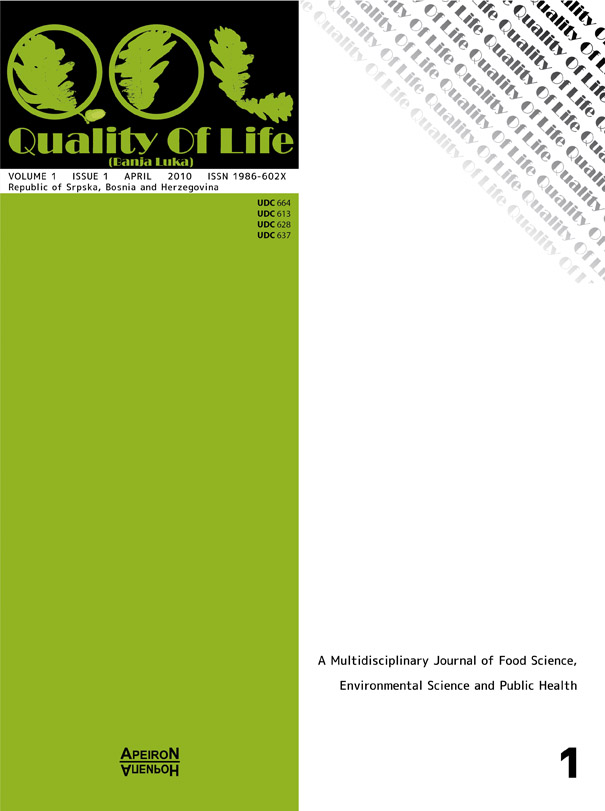Chemical and Nutritional Quality of Slaughter Pigs by-Products
DOI:
https://doi.org/10.7251/QOL1001055OAbstract
Under industrial conditions of slaughtering of pigs, cattle and poultry inedible by-products are obtained besides meat. A lot of these by-products represent a possible source for production of feed ingredients of animal origin and technical fat. For better utilization of animal materials and production of qualitative products it is necessary to recognize well characteristics of these materials.This study shows results of investigations of basic chemical composition, nitrogen fractions and amino acid composition, of some inedible by products from slaughtering of animals, with aims of indication of their high potentials.
Obtained results indicate that the examinated inedible by-products of slaughtered pigs (blood, intestines without their contents, mixed meat-fatty wastes and confiscates (lungs)) represent potent source of nutritive materials for production of valuable feeds. Mixed meat-fatty wastes are characterized by their high fat content (38%), and blood can be seen as significant source of essential amino acids.
Chemical composition of examined bovine bones show that fresh bones are a good medium for processing into a raw material for the production of gelatin and bone marrow for chemical industry.
Downloads
Published
2010-04-15
Issue
Section
Чланци
